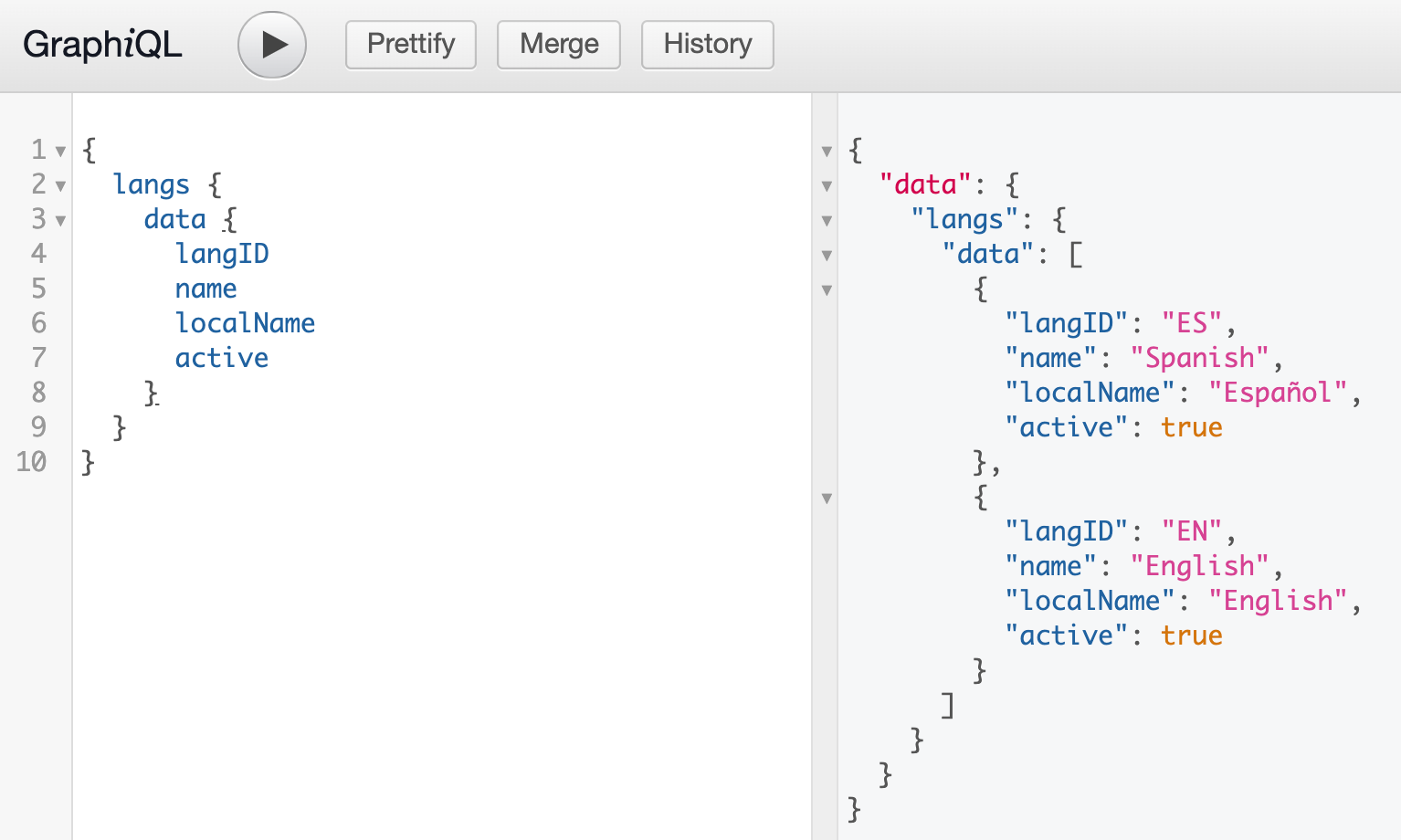Basic example Laravel + GraphQL
Laravel GraphQL is a implementation of GraphQL with PHP for Laravel. Very easy to install and use. So the plan in this post is to create langs query and see it in Graphiql.

1. Install library:#
- Laravel GraphQL library.
2. Create the migration and the model:#
Create the Migration#
I'm using PostgreSQL.
Create the Model#
I created the class BaseModel to save the created_by and updated_by fields in the database.
3. Create the GraphQL Lang Type#
This file has the columns to return as the JSON variables. You can see whole file in github.
4. Create the query#
This is the basic example to return all the columns of the lang.lang table.
5. Add the query and type to the config file#
Now you can go to http://127.0.0.1:8000/graphiql/ and run the query and see the DB values in JSON format.
This is a very basic query. To make it better you have to work with the arguments and pagination. I already did it, so if you go to my laravel-graphql-api repository you can see it. If you would like to see it live please go here.